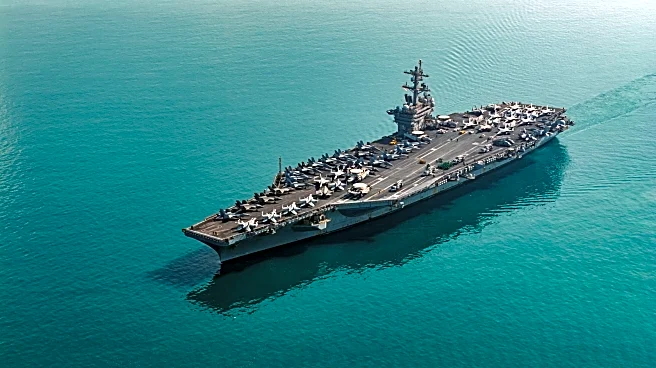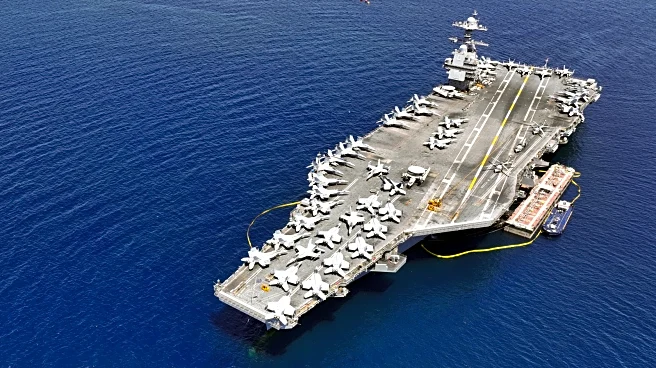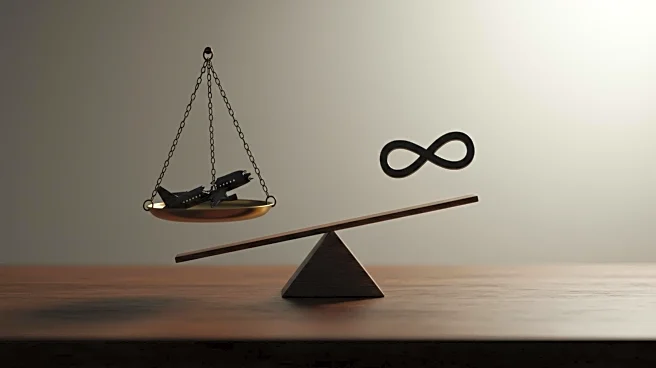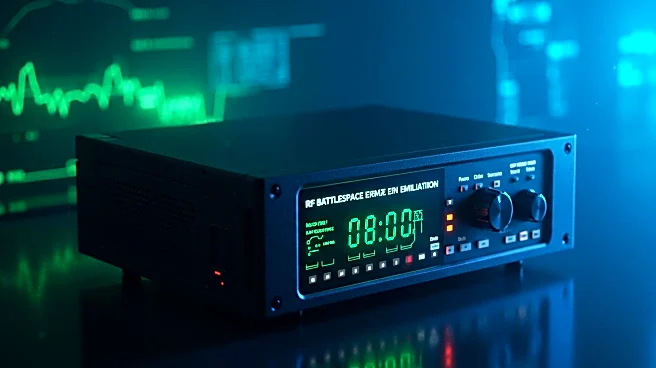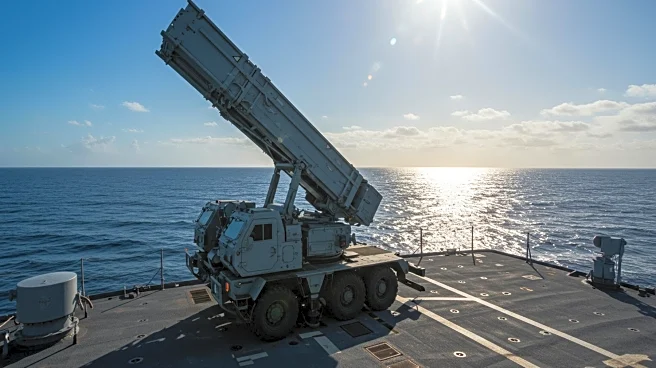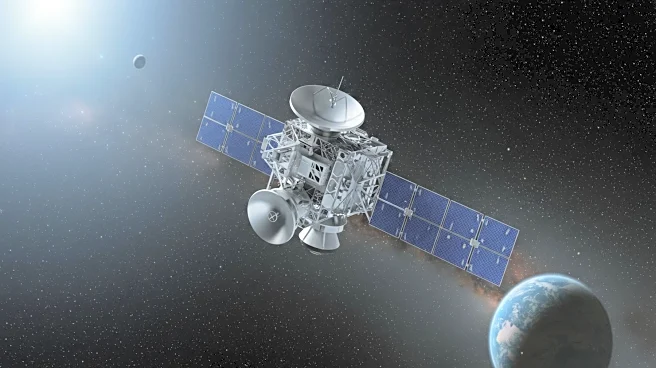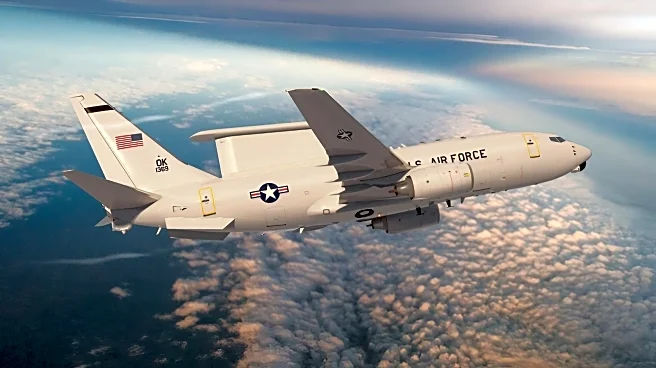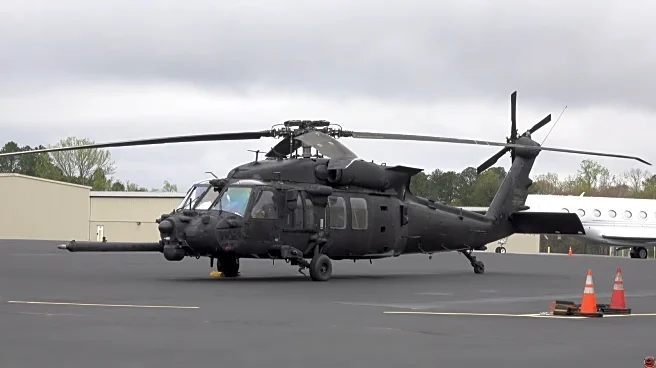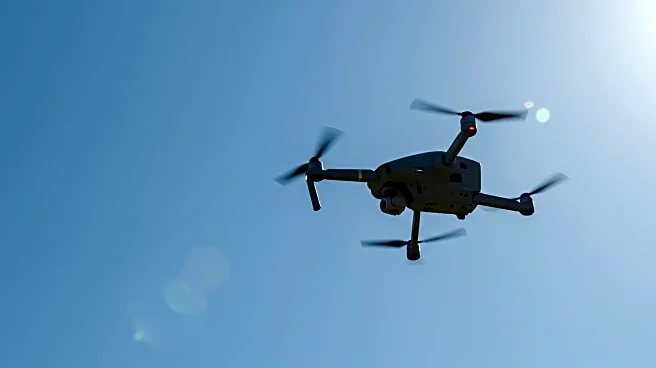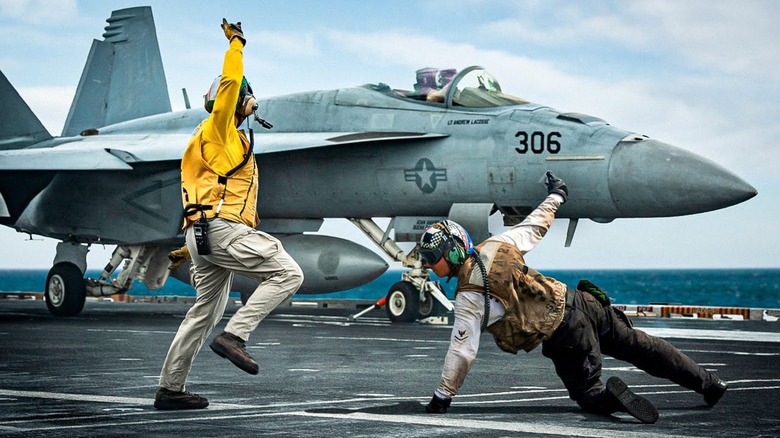
If you've ever seen a movie like "Top Gun," where fighter jets take off and land on an aircraft carrier, you likely noticed all the personnel on the flight deck directing things. They often make large hand gestures, waving their arms about as they communicate with pilots, ensuring everything operates as planned. There are several reasons for their presence. First and foremost, aircraft carrier flight decks are one of the most dangerous places to work in the U.S. military
.If one thing goes wrong
during flight operations, people can die, and there have been numerous instances of launch and recovery failures on aircraft carriers over the years. These often result in the loss of aircraft, but they can also cost people's lives. One thing that flight deck crews do while communicating with a pilot is to kneel and tap the deck and point forward before launch, and like every other gesture they make, there's a reason for it. The crew touches the deck and points as a final signal to the pilot verifying that they can now launch their aircraft, which can be greeted by a thumbs up and a speedy takeoff.
The organized chaos of the flight deck is a testament to the crew's professionalism and capabilities. You might wonder why they don't simply speak over the radio to communicate with pilots, but there's one thing folks who've never been on a carrier during flight operations don't know — it's incredibly loud, making radio unreliable and dangerous. Instead, personnel on the flight deck communicate entirely through hand gestures and colors, similar to how uniforms are organized in "Star Trek."
Read more: 10 Airplanes That Managed To Fly With Staggeringly Low Horsepower
The Many Hand Gestures Used By A Carrier Flight Deck Crew
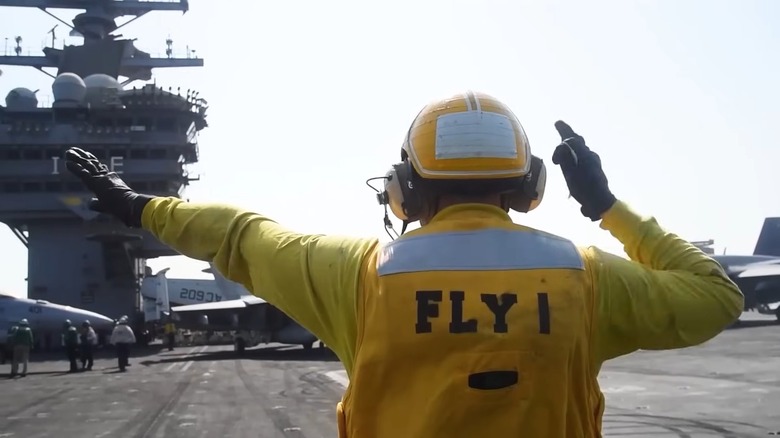
One of the reasons that flight operations are so dangerous is that an aircraft carrier's flight deck is high above the sea, and falling over can be deadly. This is something everyone working on the deck knows all too well. Unfortunately, there have been fatal accidents, so safety is top of mind for the entire crew. As far as hand gestures go, the crew doesn't come up with their own, as they're described in detail in several manuals and regulations.
This eliminates confusion and ensures each pilot and crew member knows what they're communicating and to whom. There are dozens of recognized hand gestures, including the final touching of the flight deck. Some of the more common ones shown in movies include raising a hand with a thumb up, indicating the affirmative, all clear, and will comply. Another is holding both arms vertically above the head with palms facing inward. This signals to a pilot that they need to go "this way."
Turning right or left is handled by pointing in the opposite direction with the other arm, while repeatedly moving the other arm in the intended direction upward, almost like a salute. Telling a pilot to stop is accomplished by crossing the arms above the head with palms facing forward. Other common gestures tell pilots to start their engines, pull back, raise hook, which is used for arresting an aircraft upon landing; reverse thrust taxi, and many more. Signals above the waist are communicated to the pilot(s), while those below the waist are meant to communicate with other members of the crew.
The Rainbow Of The Sea
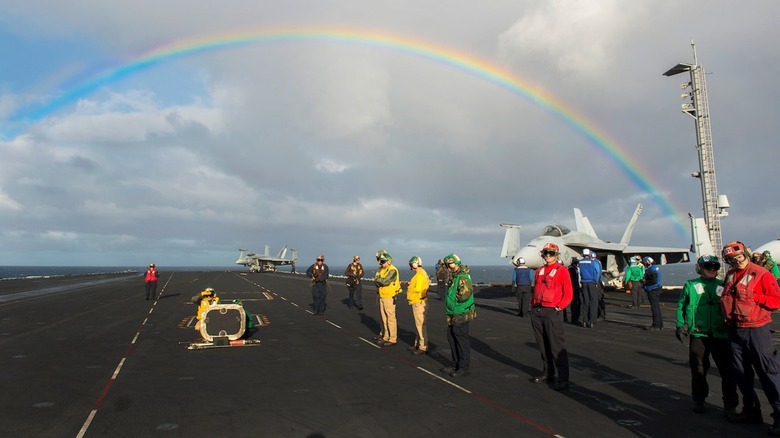
The so-called "Rainbow of the Sea" is a term referring to the many colored uniforms the flight deck crew wears depending on their specific roles. Every pilot knows this, as well as the hand signals, and it is another means of communicating between everyone involved. The colors are red, yellow, green, blue, brown, and white. Sailors wearing blue are the plane handlers, elevator operators, tractor drivers, and phone talkers — each color represents multiple functions held by those wearing it.
Purple, often called "grapes" or "fuelies," are responsible for refueling and monitoring the ship's fuel. Green personnel are responsible for operating and maintaining the catapult and arresting gear. They perform numerous maintenance functions of all equipment involved in the process. Red uniforms indicate the people responsible for ordnance, explosive ordnance disposal, and they make up the crash and salvage crews.
Brown uniforms are worn by air wing plane captains who maintain the overall safety and integrity of aircraft. They also reposition aircraft on the flight deck and hangar decks. White uniforms are involved in safety and the medical care of the other personnel, and they provide quality control of various flight operations. Finally, anyone wearing a yellow uniform is an aircraft director, catapult, and arresting gear officer. They take command of the movement of aircraft and are the ones to kneel and tap the deck to indicate that it's time to take off. They are also responsible for aircraft movement on the deck and in the hangars.
Want the latest in tech and auto trends? Subscribe to our free newsletter for the latest headlines, expert guides, and how-to tips, one email at a time.
Read the original article on SlashGear.
